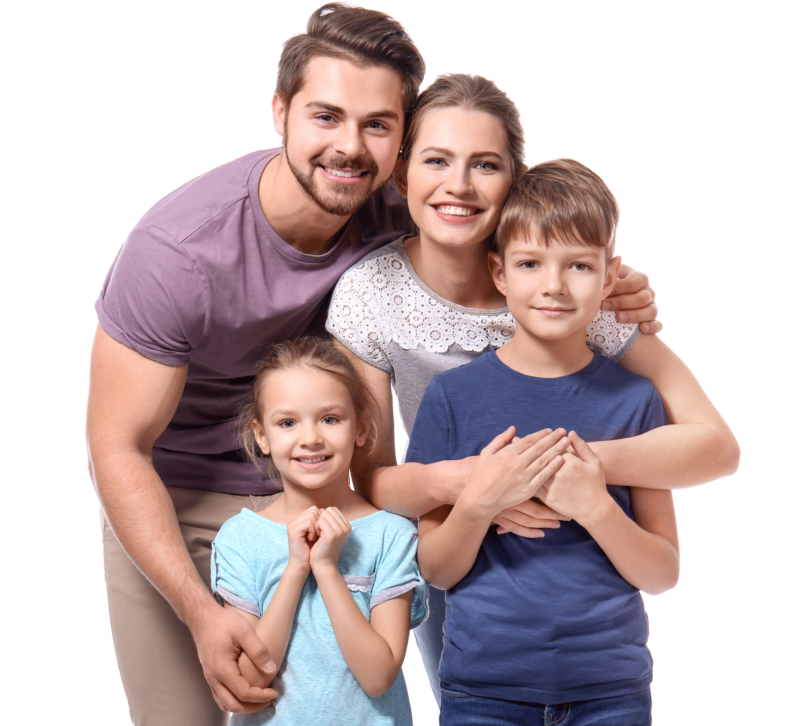As individuals on the spectrum, we’re different. We try to conform to the mold. Yet no matter how hard we work, it’s not good enough for the neurotypical (NT) world. The agencies that are supposed to serve the disabled can’t assist us because we don’t fit in with their usual population.
When President Bush signed the Americans with Disabilities Act into law on July 26th, 1990 he said, “A major goal of this legislation is to demonstrate that disabled Americans want to work to support themselves and maintain independence” (DeVroy). Since then, the ADA has helped those with physical disabilities to achieve this goal by creating user-friendly work environments. Public buildings are now all handicapped accessible.
However, those with neurologically based hidden disabilities often don’t receive the understanding or services that they need. Because these individuals are intelligent and articulate, their skills and abilities obfuscate their need for supports and services. Susan Moreno, Executive Director of Maap Services, Inc., explains the dilemma:
“The better they have done in rising to the challenges of their disability – the more able they are to communicate and act in a manner expected of non-handicapped people – the less likely they are to receive vocational rehabilitation (VR) services. Yet these rare and wonderful people have the potential to achieve the most vocationally with comparatively few hours of VR services to help them with those characteristics of their handicap which remain barriers to successful employment. These characteristics include being too honest or blunt with other people; difficulty controlling their tempers; trouble processing information; not knowing how to appropriately seek and/or accept help; difficulty socializing appropriately with coworkers; and problems dealing with the public. Without the help they need, they usually experience failure in the work place.”
They attempt to conform, but they’re not accepted. They try hard to be part of the organization only to be told, “Sorry, you just don’t fit in here.” They work hard, but are accused of being lazy. They do their best and are told it’s not good enough. They’re honest, and are accused of being rude. They work very hard to achieve, and are met with frustration due to repeated failure. VR counselors, employers, and others can’t understand how someone with a PhD seems so gauche, how someone who seems so bright has such problems with simple things, like pouring a cup of coffee, keeping their desk neat, or joining a conversation.
The Division of Vocational Rehabilitation (VR) in a particular state is designed to help all disabled people become gainfully employed. However, many VR counselors know little about conditions like autism, Asperger’s Syndrome (AS) or Nonverbal Learning Disability (NLD). Although many individuals with AS or NLD have demonstrated ability for college-level work, they may have difficulty keeping a job and have a poor work record.
When they approach VR for help and describe lifelong troubles working smoothly with others, they’re told everyone has those problems. Their problems are attributed to personality characteristics, a poor attitude or a lack of self-confidence – not a disability. That’s because when people see intelligent, skilled individuals, it’s hard for them to fathom the problems caused by poor motor skills and motor planning, lack of executive function abilities, and inability to understand nonverbal social cues. The individual’s need for detailed written instructions, for extended training time, for organization, for tasks being broken down, is not well understood.
Yet these individuals aren’t looking for excuses. They’re at the end of a long road of trying to learn coping skills in order to deal with their difficulties. They need help finding work environments where they can succeed.
Jobs available through vocational rehabilitation agencies are often inappropriate for college-educated employees with poor social skills. Laurie explains: “Everything these people had to offer was dependent on speed, requiring the ability to multi-task and the ability to think on one’s feet. Unfortunately, persons, or at least this person with NLD, are not too vocational-rehab compatible” (Reed, p.70).
The fault is not entirely with vocational rehabilitation. While jobs in supermarkets, the food industry, or cleaning services are plentiful, at professional levels the competition is fierce. Employers aren’t willing to hire professionals with invisible handicaps who are clumsy or have poor social skills, even if these employees are capable and talented.
Social demands are part of every workplace. Each job has its own social code. Rules change. New employee must be able to figure out people’s various temperaments, who’s good to work with, and who isn’t. You have to learn how hard to work: hard enough to get the job done, but if you’re too good or too quick, your coworkers may not be happy with you. You want to be seen as sharp, but not as a know-it-all. These are fine lines that are very difficult for the AS/NLD individual to master.
We need to acknowledge that NLD and AS are disabilities which may require accommodation in the work setting, and allow the person a measure of accomplishment and success in the work world by providing those accommodations.
Supports exist for others with disabilities. The blind person gets readers. The deaf have interpreters. Public buildings are wheelchair accessible. Even individuals with attention deficit disorder (ADD) have gained increased acceptance. But autism spectrum disorders are still poorly understood.
Education and training for VR staff about autism spectrum disorders and their effect on the employee is sorely needed. Vocational counselors, job coaches, and others working with this population need a good grasp of the person’s capabilities as well as disabilities. Only then will they be able to place these valuable, skilled employees in a work setting appropriate to their level of education and ability.
The AS/NLD employee can do a fantastic job if the employer is friendly, accommodating, and understanding. In a supportive, congenial environment, the right job, and with the right supervisor and supports, the individual with NLD/AS can succeed. James Emmett of the Vocational Alliance says, “Employers must understand that they are gaining a wonderful employee, but they must also realize the importance of structure and clear feedback to help the employee succeed.” Peter Gerhardt, EdD, who has many years of experience working with AS adults, recommends training for NT coworkers so that they’ll better understand the social and behavioral issues, and look past them to see the individual’s strengths. Otherwise, the most well-meaning people – counselors, bosses, and job coaches alike – will say, “he’s not trying hard enough” or “she needs more confidence.”
Developing natural supports on the job site is an important function of vocational rehabilitation. If coworkers are understanding of the individual’s communication, learning, and work style, and act accordingly (communicating explicitly; giving specific and step by step instructions; etc.) problems can be greatly diminished.
Self-advocacy is another important area where vocational rehabilitation can play a role. It’s helpful to be able to tell one’s employer, “That’s not how I work best,” and to suggest ways of handling things that may be more productive and satisfying. For example, “That’s not what I do best. Maybe I could work on a different piece of the project where I could make a better contribution.” But this is only possible if the employer understands the disability and is willing to make accommodations. Otherwise, the person may come across as having an attitude when they make such requests.
The employee needs to be taught how to state his or her needs. When someone says, “I can’t handle multi-step instructions, I’m NLD,” the other person may write them off (at worst) or won’t know how to respond (at best). He will need to be able to say, “I’m sorry, could you repeat that for me so I can understand it better?” or “Let me summarize our understanding thus far to see if I’ve gotten everything.” Unfortunately, many busy supervisors loathe taking the time to repeat instructions and make sure the trainee understands.
It’s important that the VR agency have connections to businesses and employers in the community who will take the extra effort to ensure success for these valuable and skilled employees. VR should have contacts with employers who would be willing to hire individuals with a range of strengths and weaknesses, abilities and liabilities, and who would be willing to work around individual challenges.
We’ve got a long way to go before companies are willing to accommodate productive employees with neurological disorders like AS, NLD or ADD. Yet, if employers recognized that some people who look, think, or work differently can still be productive employees, they might be more willing to accommodate different work styles or a longer learning curve.
Yvona is the author of “Employment for Individuals with Asperger Syndrome or Non-Verbal Learning Disability: Stories and Strategies,” published by Jessica Kingsley Publishers, 2004.





I was diagnosed with Asperger’s back in 1995 and had a bad experience with vocational “rehabilitation” in the late 1990s. The counselor has a condescending attitude and referred me to an agency where the person I met with was even more condescending. They ignored my strengths and rigidly adhered to the deficit model. They expected me to fail. They wanted me to fail because it kept them in business. I did a great deal of volunteering through the years, but in our bottom-line society, it didn’t “count.” I wrote three self- published books, two about music and one about my life with Asperger’s, but I am still not successful.
I had a similar experience with DORS, which is a vocational rehab here in Maryland. When they referred me to a job program through VSP, the guy who did my intake said it would be hard for me to get a job because of my lack of work experience. Then, when they referred me to JCS, another guy said the same thing and asked if I volunteered despite the fact that many employers may not count that as work experience. No matter how many years you’ve been doing it. I should’ve took matters into my own hands back then and started investing in dividend stocks with the little money I had. I should’ve ended my support from DORS before 2016 too. Now, I know why my old counselor quit.
This article may be nearly 13 years old, but it’s still very relevant now. At least with my experience trying to find employment through a state vocational rehab program. Between 2009 and 2016, I tried working with DORS in order to find a job or get some sort of certificate to help me get a good job. To make a long story short, it was a disaster. All those assessments and spending two weeks at their Workforce Development Center in Baltimore City was for nothing. The only thing I got through DORS was a two month internship through their VSP program at Sinai Hospital. The position for medical records clerk was already filled so there weren’t many openings for anyone who did a temporary internship through them including myself. Then, I was referred to JCS (Jewish Community Services) back in 2011 after it ended, which was partnered with DORS to supposedly help people with disabilities find work. It was awful. Their job search classes were terrible. I only went to a few of them and only liked one class I attended in Owings Mills. The other three classes I attended at their location in Park Heights were awful. Either the instructors or the people I attended the class with had a problem with me. I tried going back to school for medical billing and coding through DORS and ended up dropping out. I didn’t want to work at a hospital again. Once my last counselor left and they assigned me a new counselor who could care less about whether or not I got a job, I decided to stop receiving services from DORS in 2016. The last counselor they assigned me was trying to get me into an Autism jobs program, which was probably going to take me back to where I started. I was about to be 24 that year and I wasn’t going to go through that hassle again.
WOW! This article is 10 years old but hits home in 2024. I just got done advocating for disabled students in the state of Texas. They are requiring all students to have a psychological assessment without accommodations and they are using it to diagnose and deny services. How is it 2024 and nothing has changed? The VR services is discriminating against the disabled community and we must change it.